Zákynthos
Area of island: 406 sq. km/157 sq. mi
Related Attractions
Town, Zakynthos, Greece
The capital of the island' of Zákynthos bears the same name. Zákynthos, on the same site as its ancient predecessor, extends in a wide arc along the gently sloping shores of a bay in the southeast of the island. Above the town are the ruins of a Venetian castle, which is believed to have collapsed in the 1515 earthquake.
The only one of the town's magnificent Venetian mansions to survive the 1953 earthquake is the residence of the Roma family, with the charming chapel of Kyra ton Angelon. Other notable churches are Áyios Nikólaos, on the harbor, and Áyios Dionysios, with the relics of the town's patron saint.
If you walk along the flag-stoned coastal promenade, the so-called Strata Marina, at dusk, you'll get the true flavor of the town.
 Byzantine Museum
Byzantine Museum
The Byzantine Museum at Zákynthos has a scale model of the pre-earthquake town which was built by the Venetians. It houses a breathtaking collection of icons and frescoes rescued from the island's destroyed churches and monasteries.
 Museum of Dionysios Solomos and Eminent Zakynthians
Museum of Dionysios Solomos and Eminent Zakynthians
The Solomos Museum in Zákynthos contains the tombs of Dionysios Solomos and Andreas Kalvos and relics of the island's history and culture.
Castle
Above Zákynthos town is the Venetian fortress, which is believed to have collapsed in the 1515 earthquake. Only the gate, outer walls and battlements still stand. But from this vantage point there is a spectacular view of the harbor, fertile inland plain and beaches as far as the eye can see.
Zákynthos International Festival of Medieval and Popular Drama
The annual International Festival of Medieval and Popular Drama is held in Zakynthos in mid-August.
Ancient tragedies are performed on August 15.
Pitch springs, Kerri, Greece
14km/8.5mi southwest of Zákynthos town, at the village of Kerí, are the famous pitch springs mentioned by Herodotus. The pitch has been used since ancient times for the caulking of boats. The springs are now much less productive.
Laganás Bay
In the southeast of the island of Zákynthos, 8km/5mi south of Zákynthos town, is the wide bay of Laganás, with beautiful sandy beaches.
Laganás Bay has long been a breeding area for the endangered loggerhead turtle. However, the turtle habitat was becoming threatened by the huge number of tourists that began frequenting this area in the 1980s. As a result, in 2000 Greece made the area in and around Laganás Bay a managed national wildlife park.
This was met with resistance by local residents who made their livelihood off the tourist trade. Beach areas at Laganás Bay were now protected, patrolled and carried restrictions, and limited some beach access.
In recent years locals have been encouraged to develop eco-tourism geared toward turtle observation.
Makhaiadron - Church of Ayía Mávra
11km/7mi west of Zákynthos, in the village of Makhaiadron, stands the church of Ayía Mávra, with a typical (though much reconstructed) interior and a beautiful peal of bells.
Anafonítria Monastery
35km/22mi northwest of Zákynthos is the 15th century Anafonítria monastery (15th C. icons, 17th C. frescoes), in which the island's patron saint, Dionysios, was a monk.
Blue Grotto
Volimes, Greece
The village of Volimes has a wonderful Venetian tower and lovely old churches with frescoes dating to the 12th and 14th centuries.
Lófos Stráni
Near the hill overlooking Zákynthos town is the Lófos Stráni.
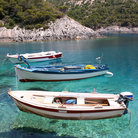
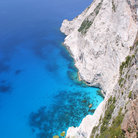
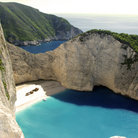
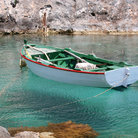
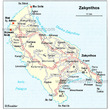
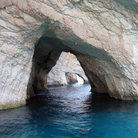
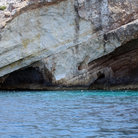

Comments